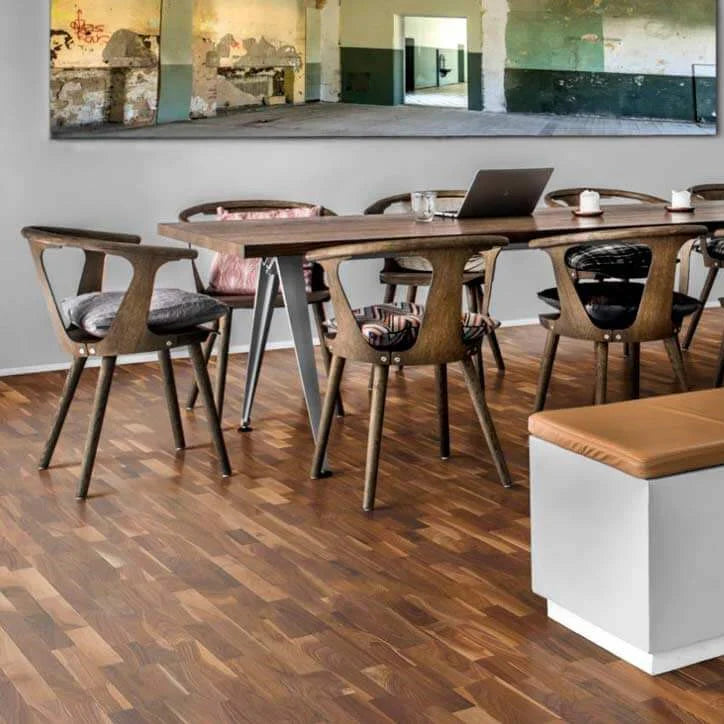
Author, Written by: Bledy (Installation Expert and Technical Writer)
Click flooring has become a favourite choice in UK homes thanks to its simple installation system and wide range of designs. However, while the click lock mechanism is designed for convenience, many DIY installers run into one common issue: chipped or damaged plank edges during fitting. With the right preparation and technique, you can avoid this problem and achieve a flawless finish.
Why Edge Damage Happens
Most click flooring edges are made with precision machined grooves and tongues. These parts lock the boards together securely, but they can be fragile if handled roughly. Common causes of damage include:
-
Using too much force when locking planks
-
Not aligning boards properly before clicking them in place
-
Installing on an uneven subfloor that puts pressure on joints
-
Lack of protective tools such as tapping blocks
Understanding these causes is the first step to preventing damage.
Step 1: Prepare Your Subfloor
Before you even lay your first plank, ensure your subfloor is:
-
Clean and dry
-
Smooth and level within the manufacturer’s tolerance
-
Free from debris that could create pressure points
A self levelling compound can fix uneven patches in older UK homes, which is key to avoiding stress on the click edges.
Step 2: Use the Right Tools
Invest in the proper tools designed for click flooring:
-
A tapping block (never hit planks directly with a hammer)
-
Pull bar for tight spots near walls
-
Spacers for expansion gaps
-
Rubber mallet for gentle tapping
These tools help you apply controlled pressure without damaging the plank edges.
Step 3: Work at the Correct Angle
When fitting boards, insert the tongue into the groove at the recommended angle (usually around 20 to 30 degrees depending on the brand). Once in position, lower the plank slowly while applying gentle pressure until it locks. Avoid forcing the plank flat too quickly, as this can crack the locking system.
Step 4: Protect the Edges
Keep the flooring in its packaging until just before installation to avoid edge wear during handling. Also, inspect each board before laying to ensure the edges are intact. Damaged planks should be set aside rather than forced into the floor.
Step 5: Take Extra Care Around Obstacles
Doorways, radiator pipes, and narrow hallways often require cut planks. Use a fine tooth saw for precision cuts, and always support the edges while cutting to prevent splintering.
Step 6: Work Methodically
Install row by row, making sure each plank is properly locked before moving to the next. Gaps between planks can create weak spots that increase the risk of edge chipping later.
Final Touch: Patience Pays Off
Click flooring is designed to make installation easier, but rushing the process is the fastest way to cause edge damage. Take your time, follow the manufacturer’s instructions, and handle every board with care.
Conclusion
Installing click flooring without damaging the edges is achievable if you combine the right preparation, tools, and techniques. By keeping the subfloor level, using protective tools like tapping blocks, and working patiently, you can enjoy a smooth, seamless floor that looks professionally fitted.
About Author:
Bledy is a flooring installation expert with over 15 years of experience. He writes easy to follow guides and tips to help homeowners and professionals with flooring projects.
